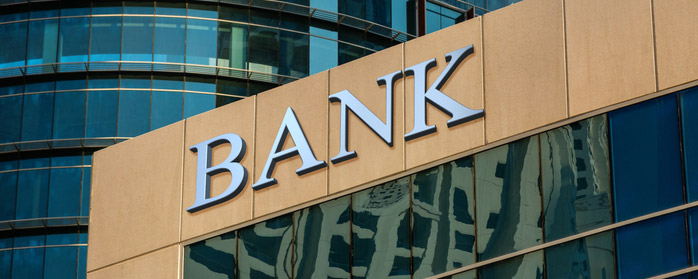The following addresses our thoughts regarding events that recently transpired at two U.S. banks—Silvergate Bank and Silicon Valley Bank—as well as the government response to the challenges at these institutions and the likely market impact.
What Happened
Headlines late last week centered on news regarding Silicon Valley Bank (SVB) and the swift withdrawal of deposits at that bank that resulted in it being put into receivership. What is all this about anyway? Is this company specific or something broader and more consequential?
We believe this is company specific and that contagion or spread to other banks should be limited in nature. It is the result of events specific to the technology sector and to a sizable (16th largest), yet relatively unknown bank that caters to early-stage companies in tech land and in the life sciences industry. The run on SVB deposits is a result of whiplash-like conditions regarding free cash flow and capital-raise conditions that have evolved at venture-stage technology companies from 2021 until now.
In 2021, technology companies were enjoying a surge in operating cash flows emanating from the V-shaped recovery out of the pandemic economy. Even early-stage companies in that environment found it easy to raise capital given the combination of low rates, record-level money supply growth and related liquidity as well as strong industry demand conditions. A niche lender like SVB that catered to technology start-ups experienced a surge in deposit growth at that time. So much so that they significantly increased their fixed income holdings, known as “available for sale” and “held to maturity securities,” and the bank was doing this during a period in which Treasury rates were very low. While these are very safe securities to hold on a bank’s books and encompass virtually no credit risk since they are backed by the full faith and credit of the U.S. government, they entail interest rate risk should a bank find itself in a position where it must sell them prior to maturity to cover significant, unanticipated deposit withdrawals.
By 2023, interest rate conditions had changed dramatically. Rates rose sharply from abnormally low levels as the Federal Reserve instituted multiple fed funds rate hikes in the second half of 2022 up to the present. At the same moment, young technology companies found themselves burning through cash as red-hot demand began to cool for electronic gadgets and associated software. It was the perfect storm for a niche lender like SVB. During this period, SVB was forced to take appropriate marks to market on its fixed income portfolio as rates rose and the bank sold these securities at a loss to cover accelerating deposit outflows. SVB also developed plans to raise equity capital in case further liquidations of its bond portfolio were necessary to cover additional deposit outflows should angst among its depositors worsen. And they did worsen. It all came to a climax at SVB due to a confluence of three events:
- On March 7, Fed Chair Jerome Powell sounded very hawkish during his congressional testimony that drove interest rate expectations higher and caused additional marks to market on the SVB portfolio.
- Depositors became increasingly worried after having learned of a smaller crypto bank, called Silvergate Bank, that liquidated itself without any government assistance to cover its deposit outflows. No depositor losses occurred there, but it failed for reasons similar to those at SVB.
- Technology-focused venture capital companies began to advise their portfolio companies to withdraw any deposits they had at SVB when the venture capitalists discovered SVB’s plan for a capital raise. In domino fashion, withdrawals led to more withdrawals up to the point in which SVB was put into receivership March 10.
Government Response
The U.S. government response to the SVB collapse was swift and has been effective so far. On March 12, the FDIC announced it would cover all depositors at SVB even if above the $250,000 normal cap for insurance per depositor. It also announced that the Fed had created a facility to cover shortfalls on any bank’s “available for sale” securities, if needed, to prevent future realized losses on these portfolios at other banks.
Future Economic and Financial Market Impact
Will there be longer-lasting economic impacts from these events? We think the major impact will be continued elevated volatility. It probably increases the odds of recession, as this puts an incremental dent in business confidence for a bit. That said, it does not diminish our belief that the market should recover as we move through 2023 and approach the 4,500 level for the S&P 500. It’s certainly not a straight shot to that target from here, but that remains our base case.
Our Perspective on These Banks
This appears to be an asset-liability management issue at a few select banks and not a broad credit crunch that will result in a deep, long-lasting recession. SVB did not have a broad, retail oriented depositor base and diversified lending portfolio as seen at our major regional and money center banks. The government has responded quickly to prevent an emotional overreaction to the challenges of these niche institutions. This is probably a shot across the bow to the Fed to soften hawkish rhetoric and recognize more publicly that its past efforts have had a positive effect on calming inflation.
The unemployment report released on March 10 was outstanding. It signaled moderation in employment growth coupled with a slowing in wage growth and an increase in the labor participation rate. This is exactly what the Fed needed to see as cover to pause, regardless of the banking news these past few days. In conclusion, we think this is time to take a breath and maintain our “hold your ground” message.
We believe the likelihood of risks spreading to other institutions like the super regionals is limited due to the idiosyncratic nature of the failures of the niche banks in question and the swift government response. Further, the regionals and money centers have more diversified sources of funding and investment portfolios.
What About Brokerage Firms?
We’ve also received questions about brokerage firms like Charles Schwab given the recent pullback in the stock price. Similar to the super regionals and money center banks, Schwab is much more diversified. Schwab has an investment-grade balance sheet with ample liquidity to meet any withdrawal requests and has its assets invested very conservatively. The recent Federal Reserve Bank Term Funding Program provides an additional source of liquidity if needed. Schwab’s business is healthy. As reported on March 13, the firm is expected to see year-over-year revenue growth this quarter of about 10% and with healthy margins. In March alone, Schwab has averaged daily net new asset growth of $2 billion per trading day. It’s also worth noting that more than 80% of Schwab total bank deposits fall within the FDIC insurance limit ($250,000). This is among the five highest ratios of the top 100 banks in the United States.
Resources from Schwab:
https://pressroom.aboutschwab.com/press-releases/press-release/2023/Schwab-Reports-Monthly-Activity-Highlights-e564be671/default.aspx
Schwab Press Release:
https://www.aboutschwab.com/perspective-on-recent-industry-events
Asset Protection
All Schwab customer accounts include appropriate regulatory protections:
- Customer brokerage securities are segregated from company accounts in compliance with the SEC’s Customer Protection Rule.
- All client accounts include up to $500,000 of insurance coverage offered by the Securities Investor Protection Corporation (SIPC).
- In the [unlikely] event that SIPC protection is exhausted, Schwab also maintains additional insurance underwritten by Lloyd’s of London and a group of other London insurers.
- All client cash deposits held in a bank account are covered by FDIC Insurance.
For additional information on how client assets are protected at Schwab, please visit: https://www.schwab. com/legal/sipc-account-protection
Additional protection through Lloyd’s of London and other London insurers —in addition to SIPC protection—is provided to Charles Schwab & Co., Inc. accounts through underwriters in London. Schwab’s coverage with Lloyd’s of London and other London insurers, combined with SIPC coverage, provides protection of securities and cash up to an aggregate of $600 million and is limited to a combined return to any customer from a Trustee, SIPC, and London insurers of $150 million, including cash of up to $1,150,000. This additional protection becomes available in the event that SIPC limits are exhausted.
The key point to understand is that Schwab keeps client assets segregated and cannot use them to finance our day-to-day operations. Unlike SVB, Schwab’s deposits are 80% secured.
Disclosures
Mariner Advisor Network is a brand utilized by Strategic Wealth Advisors Group (“SWAG”) and Mariner Platform Solutions (“MPS”). Investment advisory services are offered through Investment Adviser Representatives registered with SWAG or MPS, each an SEC registered investment adviser. Registration as an investment adviser does not imply a certain level of skill or training. SWAG and MPS comply with the current notice filing requirements imposed upon registered investment advisers by those states where they transact business and maintain clients. SWAG and MPS have either filed notice or qualify for an exemption or exclusion from notice filing requirements in those states. Any subsequent, direct communication by SWAG or MPS with a prospective client shall be conducted by a representative that is either registered or qualifies for an exemption or exclusion from registration in the state where the prospective client resides. For additional information about SWAG or MPS, including fees and services, please contact SWAG/MPS or refer to the Investment Adviser Public Disclosure website (www.adviserinfo.sec.gov). Please read the disclosure statement carefully before you invest or send money.
For information about which firm your advisor is registered with, please refer to the Investment Adviser Public Disclosure website (www.adviserinfo.sec.gov) or the Form ADV 2B provided by your advisor.
Investment Adviser Representatives are independent contractors of MPS or SWAG and generally maintain or affiliate with a separate business entity through which they market their services. The separate business entity is not owned, controlled by, or affiliated with MPS or SWAG and is not registered with the SEC. Please refer to the disclosure statement of MPS or SWAG for additional information.





